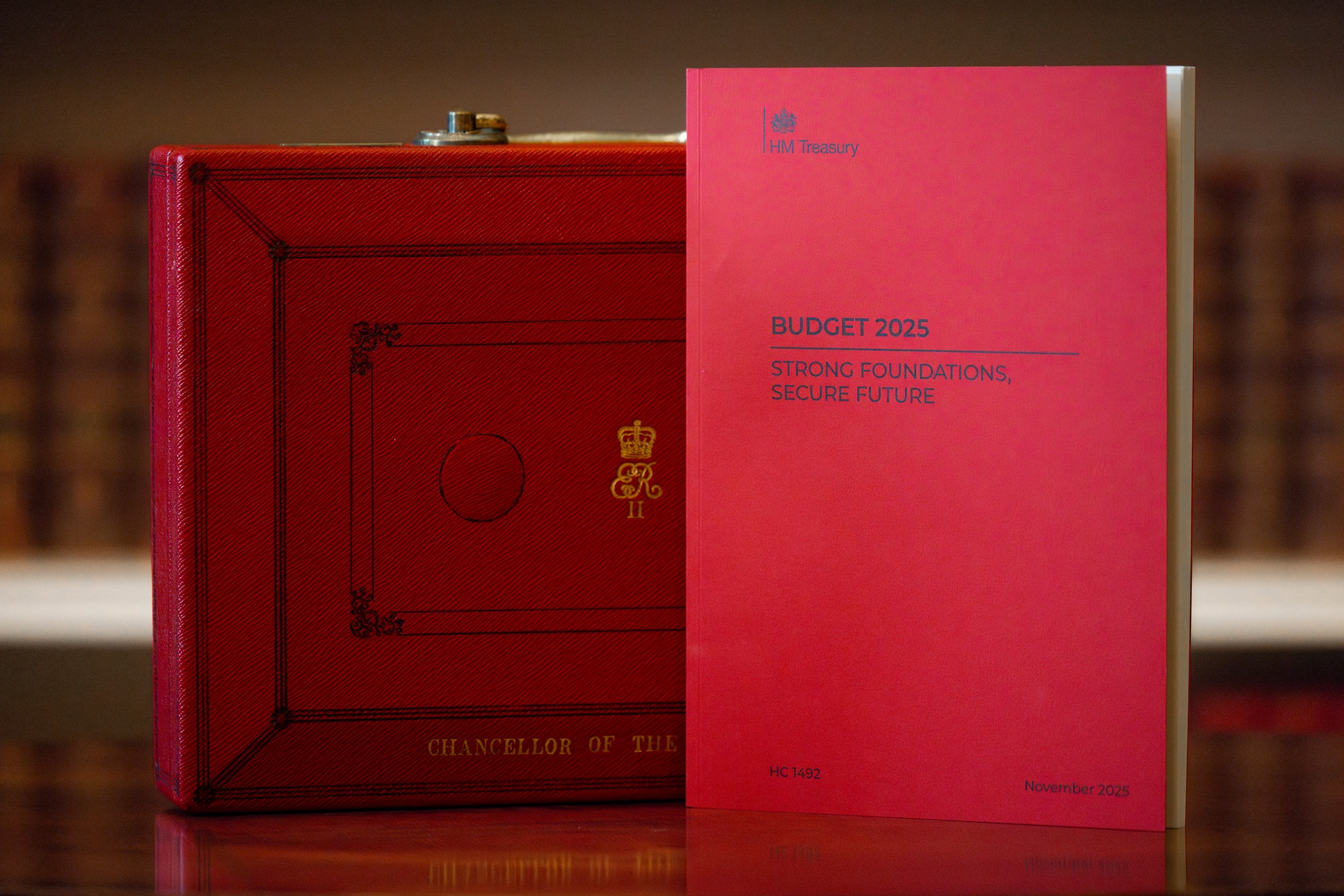How to Navigate HMRC Enquires into R&D Tax Credit Claims

The terms “HMRC” and “enquiry” are not what most people will want to hear coined together, as it means HMRC want to dig deeper into an aspect of your tax affairs. From the outset, they will often hold the threat of fines or other penalties over you if they were to find serious wrongdoing, amplifying worry.
The terms “HMRC” and “enquiry” are not what most people will want to hear coined together, as it means HMRC want to dig deeper into an aspect of your tax affairs. From the outset, they will often hold the threat of fines or other penalties over you if they were to find serious wrongdoing, amplifying worry.
While the majority of R&D tax credit claims in the UK are legitimate and made in good faith, HMRC uncovered an alarming rate of loose or even fraudulent claims amongst the billions of pounds they have awarded in tax credits in recent years. As part of their response (you can read the full measures here), they have significantly increased the number of random and targeted enquiries they perform.
That said, enquiries into R&D tax credit claims are long established, albeit in lower numbers, and this article explains the background in more detail.
Given the far greater attention now given through enquiries, we recently held an in-depth round table discussion on them to aid innovative UK businesses who may have concerns. You can watch the round table directly here. And the following article is a written companion piece to what was said.
Understanding HMRC R&D enquiries
If you receive a brown envelop announcing that HMRC are opening an enquiry, despite its tone it is no guarantee that HMRC suspect any wrongdoing. You could simply be the subject of a spot check. This means that there is no way of claiming for R&D tax credits without there being some chance of an enquiry being opened.
Accepting this and being prepared to face it professionally, and armed with your facts and figures will stand you in good stead – assuming you made the claim in good faith originally of course. After all, it is in everyone’s best interest that HMRC protects the public purse and the reputation of this particular tax incentive. It just may not seem like it when it means added work and stress for you.
Preventative measures
While you can’t prevent an enquiry for certain, by following good practice from the outset you may be able to reduce the likelihood of experiencing one. This also means that you will have as smooth a ride as possible should an enquiry be launched.
Largely, this means understanding the BEIS guidelines, keeping thorough records of qualifying expenditure and activities and completing the application documents (which have become more complex) compliantly.
Working with a reputable tax adviser will be a hallmark of quality on your application too. There are plenty of other good tax advisers like us out there, but there are also some bad ones, so choose carefully.
Steps to take during an enquiry
As we touched upon earlier, you may get a strong sense of negativity or accusation, when you receive your initial letter. Don’t get caught up with this as it is a standard tone of HMRC and not in context to the work you have done.
A good starting point for you is a quick “yes” or “no” check on whether you have been working with a professional R&D tax adviser or similar. If the answer is yes, reach out to them and establish if they already include enquiry support as part of their service, and if so how much?
If the support is comprehensive, it will be all the way up to an appeal stage with HMRC. Others may provide support only for the first letter, or say a set number of hours after which you have to pay ad hoc. Some may not provide any support at all. It is really important to understand what their enquiry strategy is, and their perception of the landscape in general.
If you have not worked with an adviser, but would like professional help now, research some options. We are happy to talk through how we could help with you.
If you want to go it alone, your first reading should be the Corporate Intangibles Research and Development (CIRD) manual. This is HMRC’s internal manual for how they assess claims and interpret R&D guidelines.
It is also sensible to familiarise yourself with the latest Guidelines for Compliance (GfC) relating to R&D tax credits – this was published on 31st October 2023 which includes examples of qualifying projects and the kind of evidence and records to back up your claim.
Typically you have a 30-day window to respond to HMRC initially. If it is a challenge to gather the appropriate documentation in this time, it is normally possible to get an extension. But make sure you start your dialogue with them – don’t just ignore it.
Named case workers versus the R&D compliance team
Once the enquiry commences, there are two initial paths that could be taken, but you do not get a choice. One is to have a named case worker handling the enquiry; the other is for it to be managed by the R&D compliance team, with no named contact.
While in theory these should be similar processes, in our experience they are not. With a named contact you get one person asking the questions and making the decision. You get a sustained and consistent dialogue, and often a meeting where everything can be resolved efficiently with less correspondence necessary and therefore typically a quicker resolution.
When it is the R&D compliance team, you’ll be in conversation with different people who perhaps don’t have quite the grasp of your case, it will be much less likely that you will get a meeting or teleconference and the process is susceptible to delay and frustration.
There is a line of thought at HMRC that comes from high up – Philippa Madelin, Director of Wealthy and Mid-sized Business Compliance – that a meeting is not required to conclude an enquiry, and that the route for having a meeting only remains open where it is deemed necessary. We disagree. In our experience, we’ve always found those conversations to be not just beneficial, but really necessary if a company wants to get an enquiry resolved in a timely manner.
Alternative dispute resolution (ADR)
If your enquiry is not resolved it will eventually go to tribunal, but before that there is an opportunity for alternative dispute resolution (ADR). This is a late-stage appeals process which consists of a day of mediated discussion between you, accompanied by your tax agent if instructed, and HMRC – facilitated by a neutral mediator.
You can go to ADR at two stages:
- You have an appealable decision – That’s when HMRC have either issued a view of the matter letter or a Solicitor’s Office and Legal Services (SOLS) review letter.
- In the midst of a compliance check – You believe there is a dispute about the facts, your not clear about the information HMRC has used, or you do not understand why they are not using information you have provided them.
If you have a named case worker, they would be present from HMRC. If you had previously dealt with the compliance team, HMRC will send a new representative, who has no previous dealings with the claim. A case workers manager will probably be present to sign off on any resolution.
It is worth stressing too that the mediator is totally neutral, and they are on home turf. They set the rules and hold both sides to account, ensuring they engage in the right spirit.
ADR takes place over one day. It is a series of meetings starting with opening statements, citing positions and relevant case law to support those decisions. Vital discussion is then had which will always lead to an exit agreement by the end of the day. This could be full acceptance by HMRC of the claim, an agreed partial acceptance or no agreement which would then leave the next step as a tribunal.
At the ADR stage, HMRC are typically far more focused on reaching a mutual agreement, and there is a shift from “why is this R&D?” to “why isn’t this R&D?” which can be helpful for reaching a desirable outcome.
The role of an R&D tax adviser in an enquiry
In today’s environment, you can see the role of a good R&D tax adviser as beginning during the claim preparation phase. The good practices that they will instil, such as record keeping, thorough understanding of the BEIS guidelines and a well-written narrative will all contribute to reducing the likelihood of an enquiry in the first place.
But if an enquiry is opened, much of the legwork is then already done in terms of having the evidence base to contest the enquiry.
Moreover, for any company facing an enquiry without professional support, the tone of HMRC’s correspondence can be quite confrontational – almost that nothing qualifies for R&D. Having an adviser by your side who is experienced in these matters can provide that vital support that you are in the right and only claiming what you are entitled to. Without this support, it is easy for a company to retreat and accept a decision that is less favourable to them.
At Kene, we will spend a great deal of time coaching clients so that they can speak with confidence during an ADR.
Common enquiry pitfalls and how to avoid them
As we have alluded to, one pitfall is to take HMRC’s accusatory tone personally and feel that you have done something wrong, despite your claim being genuine. Make sure you stay calm, confident and address the enquiry professionally.
When HMRC talk about penalties, there are three scenarios. Careless, deliberate, and concealed and deliberate. Of course it is in everyone’s interests for deliberate fraudsters to be caught, but just be wary of coming across as careless in your response to enquiry questions, as ignorance of the rules is no defence when you have proactively claimed for R&D tax credits.
Make sure you have read up on all the guidelines and know your own R&D inside out. There is no substitute for this and an HMRC enquiry will pick up on any lack of clarity and conviction you have.
An example of how we work during an enquiry
An enquiry is much more likely now and we would encourage our clients to accept that this is a potential part of the process when claiming R&D tax credits.
If a client receives that first letter we’d encourage them to immediately contact us and we will help put your mind at ease. HMRC will want to see all engagement as client led, but we will be by your side at every step of the way.
We’ll review HMRC’s position and collate all relevant evidence which we have already prepared during the original claim. If any gaps need to be filled, we will work with you to fill them.
When it comes to your interactions with HMRC we will prepare you thoroughly, so you feel ready and at ease. If it goes to ADR we will attend this with you, and should it not be resolved at this stage advise you on what’s next.
Access our specialist support hub for R&D tax relief guidance.
Expert enquiry help from us
There is no doubt that the enquiry landscape has changed considerably since 2022. For any company making a legitimate claim this may lead to an additional burden, exacerbated by worry at the tone of HMRC’s correspondence, and frustration at their approach to the enquiry.
Balance this against the job that HMRC is up against, trying to get on the front foot after widespread error and fraud was uncovered and it may temper some of the frustration. One thing is for certain. It will be a major help to have a professional adviser working for you – someone familiar with the enquiry process.
A good R&D adviser will guide you through all of this, putting HMRC’s adversarial tone in context and helping you compile the right evidence base to address their concerns.
With a dedicated enquiry team, plus industry experts and chartered tax advisers in our ranks we have all the resources you need to successfully claim R&D tax credits and navigate any enquiry you experience.
To find out more about how we can support you, book a free consultation.
FAQs

Can we help your business?
Book a free consultation with our expert R&D funding advisors today. We specialise in helping innovative businesses like yours unlock millions in government funding, specifically allocated to fuel your innovation. Let us help your business access the support it deserves.









.svg)


